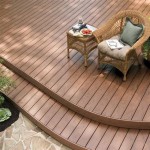Replacing Exterior Vinyl Flooring Rollers: A Comprehensive Guide
Exterior vinyl flooring, often used on decks, patios, and balconies, offers a durable and aesthetically pleasing surface. However, like any flooring system, it relies on the functionality of its components, including the rollers. These rollers play a crucial role in ensuring smooth operation and preventing premature wear and tear on the flooring. Over time, rollers can become worn, damaged, or misaligned, necessitating replacement to maintain the integrity of the vinyl flooring system. This article provides a comprehensive guide to replacing exterior vinyl flooring rollers, covering key aspects like understanding the need for replacement, selecting appropriate rollers, and executing the replacement process.
Understanding the Importance of Roller Replacement
Exterior vinyl flooring installations typically incorporate rollers to facilitate smooth movement and reduce friction. These rollers are often situated beneath the flooring system, allowing it to expand and contract with temperature fluctuations while minimizing strain on the substructure. When rollers deteriorate, several issues can arise, including:
- Uneven Flooring Surface: Worn or damaged rollers can cause the flooring to become uneven, creating tripping hazards and compromising aesthetics.
- Increased Friction: Deteriorated rollers increase friction, making it more challenging to move the flooring system and potentially causing damage to the substructure.
- Premature Wear: Increased friction can accelerate wear and tear on the flooring itself, shortening its lifespan.
- Noise: Worn rollers can create squeaking or grinding noises as the flooring moves, diminishing the overall enjoyment of the space.
Recognizing the importance of roller replacement is crucial for maintaining the functionality and longevity of exterior vinyl flooring. Regular inspections and prompt replacement of worn rollers can prevent costly repairs and ensure a smooth and aesthetically pleasing outdoor space.
Selecting the Right Replacement Rollers
Choosing the correct replacement rollers is vital for ensuring seamless integration with the existing flooring system. Several factors should be considered:
- Roller Material: Selecting the appropriate roller material is crucial. Common materials include nylon, polyurethane, and stainless steel. Nylon rollers offer good durability and resistance to chemicals, while polyurethane provides excellent wear resistance and cushioning. Stainless steel rollers are robust and suitable for high-traffic areas.
- Roller Diameter and Width: These dimensions should match the existing rollers to ensure proper fit and function. Consult the flooring manufacturer's specifications or contact a qualified flooring specialist for guidance.
- Load Capacity: The rollers must be rated for the weight they will support. Overloading can lead to premature wear and failure.
- Environmental Considerations: If exposed to harsh weather conditions, select rollers designed for UV resistance and temperature stability.
Consulting the original installation manual or contacting the flooring manufacturer is highly recommended for accurate roller specifications. When in doubt, seeking professional guidance is the best course of action.
Replacing Exterior Vinyl Flooring Rollers: A Step-by-Step Guide
Once the appropriate replacement rollers are acquired, follow these steps to replace them:
- Prepare the Area: Clear the area around the flooring system to allow for sufficient working space. Remove any furniture or obstacles.
- Identify the Rollers: Locate the rollers beneath the flooring system. They are typically positioned at the edges or corners to facilitate movement.
- Remove the Old Rollers: Depending on the specific installation, the rollers might be secured with screws, clips, or other fastening mechanisms. Carefully remove these fasteners and detach the old rollers.
- Install the New Rollers: Position the new rollers in the same location as the old ones, ensuring they are aligned correctly. Reinstall the fasteners to secure the rollers in place.
- Test the Flooring: Carefully move the flooring system to ensure the new rollers are functioning smoothly and that the flooring is moving freely. If any resistance or unevenness is detected, recheck the installation and adjust as necessary.
If the replacement process seems complex or you are uncomfortable performing it yourself, it's recommended to seek assistance from a qualified professional. They possess the expertise and tools to ensure a smooth and successful replacement.
Replacing exterior vinyl flooring rollers is essential for maintaining the functionality and aesthetics of the flooring system. By understanding the importance of replacement, selecting appropriate rollers, and following the steps outlined in this guide, homeowners can ensure a smooth and trouble-free experience with their exterior vinyl flooring for many years to come.

Roberts 75 Lb Vinyl And Linoleum Floor Roller With Transport Wheels 10 950

Roberts 75 Lb Vinyl And Linoleum Floor Roller With Transport Wheels 10 950

Roberts 2 In Vinyl Seam Roller 10 963

Roberts 75 Lb Vinyl And Linoleum Floor Roller With Transport Wheels 10 950

Roberts 2 In Vinyl Seam Roller 10 963

Roberts 75 Lb Vinyl And Linoleum Floor Roller With Transport Wheels 10 950

Project Source Floor Rollers 7 5 In Stainless Steel Adjustable Handle Roller 59007 At Com

Roberts 75 Lb Vinyl And Linoleum Floor Roller With Transport Wheels 10 950

Roberts 2 In Vinyl Seam Roller 10 963

Project Source Floor Rollers 7 5 In Stainless Steel Adjustable Handle Roller 59007 At Com
Related Posts








